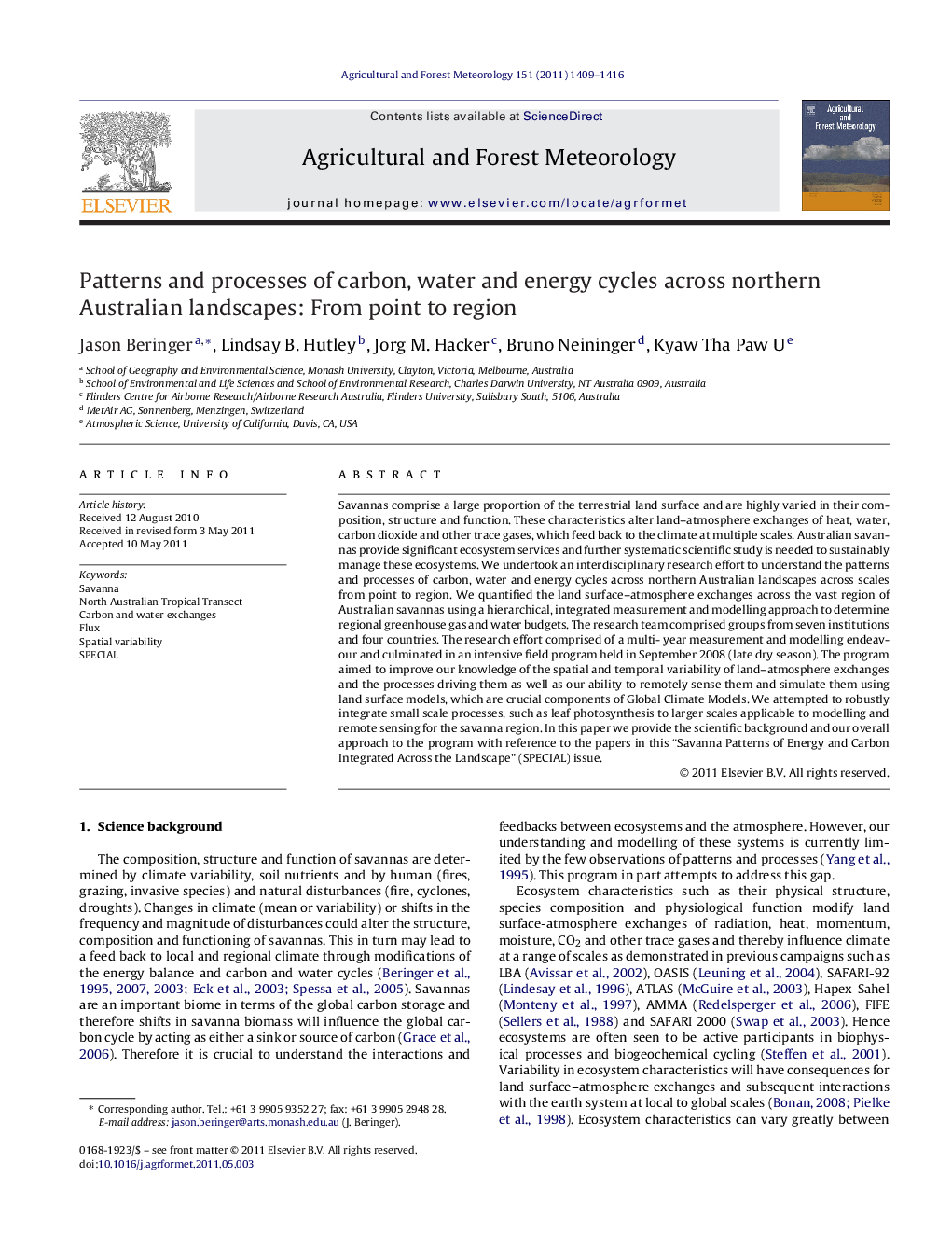| Article ID | Journal | Published Year | Pages | File Type |
|---|---|---|---|---|
| 82176 | Agricultural and Forest Meteorology | 2011 | 8 Pages |
Savannas comprise a large proportion of the terrestrial land surface and are highly varied in their composition, structure and function. These characteristics alter land–atmosphere exchanges of heat, water, carbon dioxide and other trace gases, which feed back to the climate at multiple scales. Australian savannas provide significant ecosystem services and further systematic scientific study is needed to sustainably manage these ecosystems. We undertook an interdisciplinary research effort to understand the patterns and processes of carbon, water and energy cycles across northern Australian landscapes across scales from point to region. We quantified the land surface–atmosphere exchanges across the vast region of Australian savannas using a hierarchical, integrated measurement and modelling approach to determine regional greenhouse gas and water budgets. The research team comprised groups from seven institutions and four countries. The research effort comprised of a multi- year measurement and modelling endeavour and culminated in an intensive field program held in September 2008 (late dry season). The program aimed to improve our knowledge of the spatial and temporal variability of land–atmosphere exchanges and the processes driving them as well as our ability to remotely sense them and simulate them using land surface models, which are crucial components of Global Climate Models. We attempted to robustly integrate small scale processes, such as leaf photosynthesis to larger scales applicable to modelling and remote sensing for the savanna region. In this paper we provide the scientific background and our overall approach to the program with reference to the papers in this “Savanna Patterns of Energy and Carbon Integrated Across the Landscape” (SPECIAL) issue.
► Overview for the SPECIAL section. ► Large and multidisciplinary field campaign to examine spatial variability in fluxes. ► Hierarchical and integrated measurement/modelling campaign over Australian savannas. ► Spatial variability of carbon and water fluxes correlated with rainfall gradient. ► Spatial variability of rainfall drives canopy LAI and floristics.
